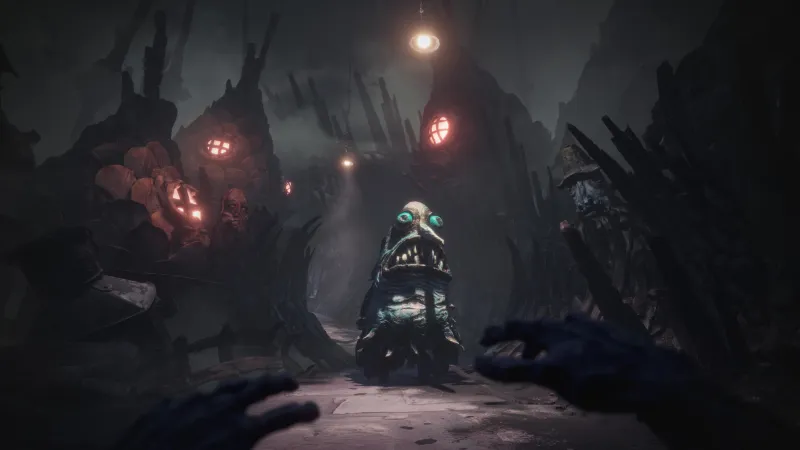The Midnight Walk Review – A Late-Night Treat

“Cozy” and “horror” seem like words with opposing definitions, but developer MoonHood Studio has repeatedly marketed its debut game, The Midnight Walk, as a cozy horror game. I understand where the studio is coming from; despite jump scares and chase sequences, the Tim Burton-esque art style is nostalgic, reminding me of watching Corpse Bride or The Nightmare Before Christmas as a kid. That said, cozy and horror are both genres that describe a game’s aesthetics rather than its mechanics, and while The Midnight Walk’s visuals, story, and soundtrack are compelling, its mechanics are less exciting. Still, that core paradox of “cozy horror” and its accompanying style was plenty to motivate me to see the game’s satisfying end.
In The Midnight Walk, you play in first person as The Burned One, a creature whose face we never see, but whose hands are dark, shriveled, and scarred. The titular journey is a trek that The Burned One and their adorable, flaming companion Potboy embark on together, helping people along the way. It feels like playing through an old children’s book, both in its whimsical tone and because of the narrator who guides the player through the story.
In the land of The Midnight Walk, the sun disappeared a long time ago, so most creatures have only ever known the darkness and the cold. It’s only natural, then, that your main tool for solving problems is fire. Using matches, a match-flinging firearm, and the flickering flame on Potboy’s head, you light candles to see, stay warm in the cold, and lure monsters out of your path. The game also includes a button to shut your eyes, which allows you to listen more closely to your surroundings and interact with glowing eyes on doors or certain enemies. I appreciate how the themes of light and warmth extend from the plot to your character’s abilities.

Generally speaking, however, the gameplay is nothing special. The linear, story-focused experience combines simple stealth and puzzle-solving. There are a few standout moments and mechanics, like a puzzle that has you close your eyes when monsters chase to turn them into statues, but it was mostly a vehicle to get me from one interesting area to another. Lighting candles and sneaking past monsters is never unresponsive or boring, just uninteresting: it’s been done before. That said, the game’s quick five to seven hour length keeps this from being a major detractor.
The reasons to play The Midnight Walk are its art and music. The visual aesthetic, achieved through hand-crafted models scanned into a digital format, is similar to something you’d find in a stop-motion film. Characters have round heads, long, skinny limbs, and exaggerated facial features that make them so ugly they somehow loop around to being cute. Potboy is the perfect example of this, with an adorably jagged smile. Across the board, characters are charming, off-putting, and unique, from a village of disembodied heads to a walking house named Housy.

While I knew about the game’s visuals through a few screenshots beforehand, I was pleasantly surprised by the quality of The Midnight Walk’s soundtrack. Instead of matching the dark, Halloween vibe the rest of the game has, the score emphasizes the adventure’s earnest tone, often showcasing a single clarinet or saxophone playing a simple melody to underline the emotional weight of the journey. While neither of the main characters can speak, the music communicates their emotions better than words could. The final portion of each chapter has Potboy reignite some long-dead flame, and the musical swell associated with that action does a lot to inform the player of its importance. Out of darkness, there is flame; out of silence, there is music.
The Midnight Walk is a rare case of a book best judged by its cover. If its aesthetic speaks to you, you’ll have a pleasant, spooky journey alongside Potboy. If it doesn’t, its simple gameplay is unlikely to grab your attention tightly enough to make up for it. Regardless, its execution of this style is commendable, and as the score soared in the final moments of my playthrough, I knew it was a walk I was glad to have taken.



